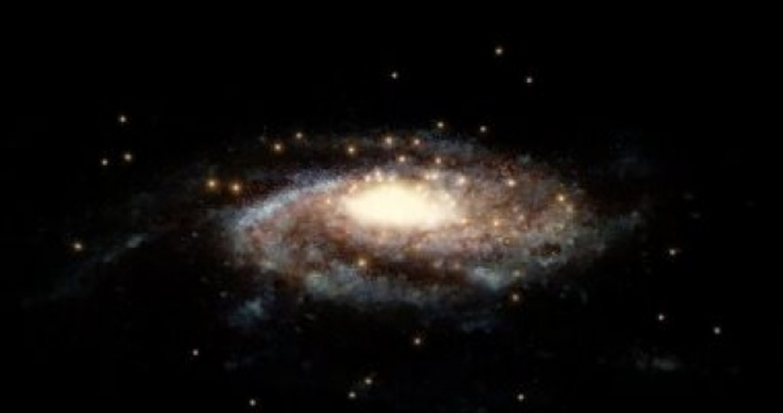The discovery of the oldest planetary debris in the Milky Way, 90 light-years from Earth
Astronomers have identified the oldest star in our galaxy that is collecting debris from minor planets, making it one of the oldest rocky and icy planetary systems ever discovered in the Milky Way, RT reports.
The results of the team, led by the University of Warwick, published in the Monthly Issue of the Royal Astronomical Society, conclude that a faint white dwarf lies 90 light-years from Earth, as well as the remnants of the planetary system that orbits it. He. She. It is more than 10 billion years old. .
It is known that the fate of most stars, including those similar to our Sun, is to become a white dwarf. A white dwarf is a star that has burned out all its fuel, expelled its outer layers, and undergoes a process of shrinkage and cooling.
During this process, all orbiting planets will be disabled and, in some cases, destroyed, allowing their debris to collect on the surface of the white dwarf.
Scientists have now discovered one of the oldest rocky planetary star systems in our galaxy, consisting of two white dwarf stars and the remains of rocky planets more than 10 billion years old.
The team found the two white dwarf stars about 90 light-years from Earth, and their discoloration was caused by material from earlier rocky planets, likely destroyed by the stars' red giant phase.
In this study, the team of astronomers modeled two unusual white dwarfs discovered by the European Space Agency's GAIA space observatory. Both stars are contaminated with planetary debris, one is unusually blue, and the other is the faintest and redder so far found in the local galactic region, and the team has subjected both to further analysis.
Using spectroscopic and photometric data from GAIA, the Dark Energy Survey and the European Southern Observatory's X-Shooter instrument to determine how long it has cooled, astronomers found that the "red" star WDJ2147-4035 is about 10.7 billion years old, of which 10.2 billion years were spent in Cooling as a white dwarf.
Spectroscopy involves analyzing light from a star of different wavelengths, which can detect when elements in the star's atmosphere absorb light of different colors and help identify and measure the ones present.
By analyzing the spectrum of WDJ2147-4035, the team found the minerals sodium, lithium, potassium and carbon that were originally detected on the star - making this the oldest mineral-contaminated white dwarf discovered to date.
The other "blue" star WDJ1922+0233 is slightly smaller than WDJ2147-4035 and was contaminated with planetary debris similar in composition to Earth's crust.
The scientific team concluded that WDJ1922+0233's blue color, despite its cold surface temperature, was caused by an unusually mixed atmosphere of helium and hydrogen.
Debris in the near-pure, high-gravity atmosphere of the red star WDJ2147-4035 is from an ancient planetary system that survived the star's evolution into a white dwarf, leading astronomers to conclude that this is the oldest planetary system discovered around a white dwarf in the Milky Way.
"The red star WDJ2147-4035 is an enigma, because the accumulating planetary debris is very rich in lithium and potassium, and unlike anything known in our solar system, this is a very interesting white dwarf," said the University of Warwick PhD student in physics and lead author of the study, Abigail Elms. , in a statement. The surface's extremely cold temperature, the minerals that pollute it, its age, and the fact that it is magnetic make it extremely rare."
“These metallic stars show that Earth is not unique: there are other planetary systems with Earth-like planetary bodies,” Elms added, noting that there are also other stars in the same orbit as our sun destined to transform white dwarfs. "Cold white dwarfs make up the oldest stars in our galaxy and provide information on the formation and evolution of planetary systems around the oldest stars in the Milky Way," she said.
Professor Pierre-Emmanuel Tremblay from the University of Warwick's Department of Physics said: "When these ancient stars formed more than 10 billion years ago, the universe was less metal-rich than it is now, because minerals are formed in advanced and giant stars. stellar explosions The two white dwarfs that formed and their observations provide an exciting window into planet formation in a mineral-poor, gas-rich environment that was different from conditions when the solar system formed. “
source:Websites



